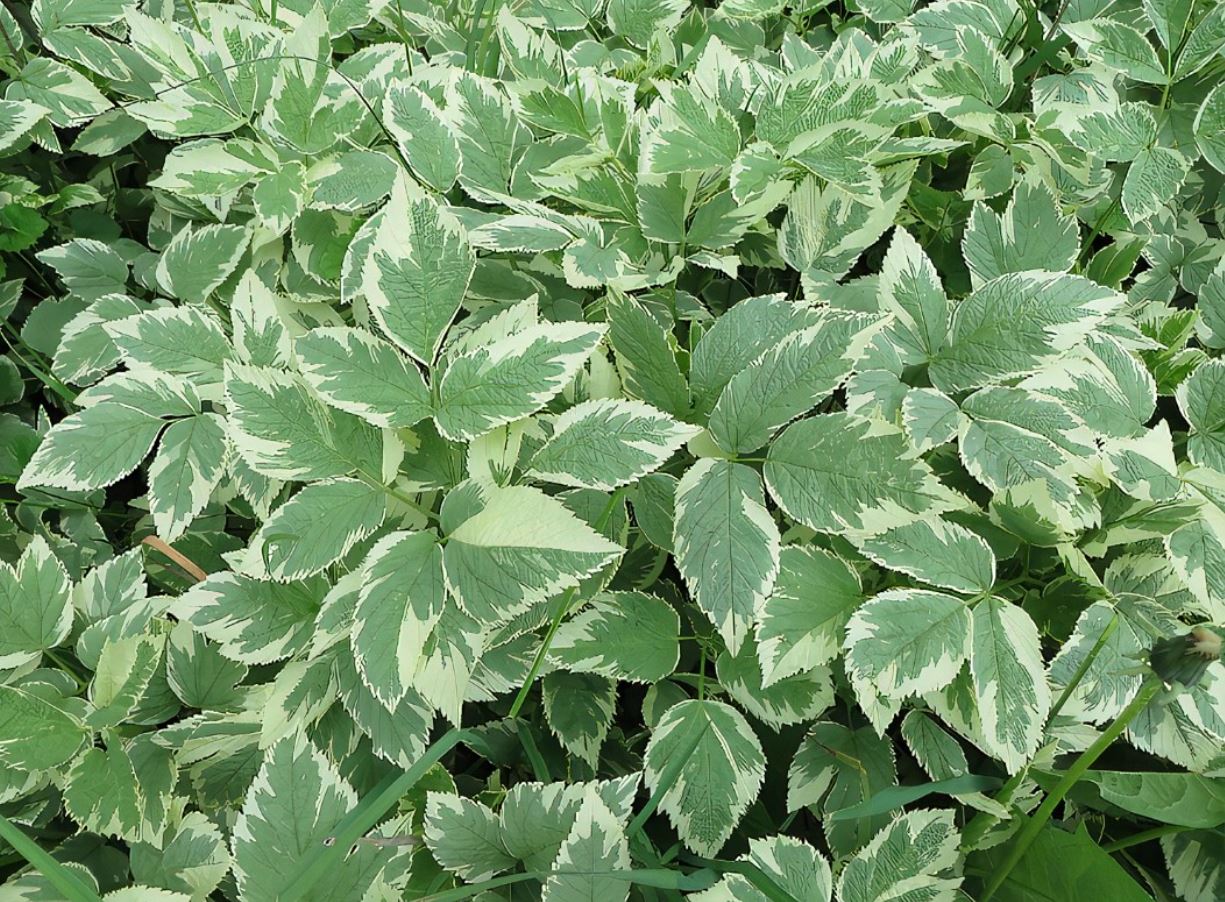Introduced species: Bishop’s Goutweed (Aegopodium podagraria)
Characteristics:
Bishop’s goutweed is a creeping garden cultivar, used as a low-maintenance ground cover in shady moist areas. A member of the carrot family, the plant reaches 1.5 to 3 feet tall with compound leaves consisting of three leaflets that are mitten-shaped. The leaves are often white and green variegated, but commonly revert to green when it escapes cultivation. The small white flowers form clusters shaped like a flat umbrella (think: queen anne’s lace) and appear by June.
Spread:
Goutweed spreads by fast-growing invasive roots, called rhizomes, and seed dispersal from animals, running water, and foot traffic. It is highly shade-tolerant and forms dense thickets that commonly escape from yards into adjacent natural areas, displace native plants, and prevent native tree seedlings from becoming established. The sale of goutweed has been banned in many eastern states and goutweed is recommended for control in PNW protected natural areas as even a small piece of rhizome can re-sprout into a new plant.
Control:
Manual control requires the complete removal of all the rhizomes and persistent follow-up. Consequently manual control is only recommended for small patches. One source also suggests solarization by mowing the plants to one inch high and covering the area with tarps or black plastic closely staked to the ground for several weeks.

Native Replacements: Yarrow Achillea millefolium var. Occidentalis
Yarrow is in the aster family and is a pollinator-friendly, long-blooming, drought-tolerant native. It is easy to start from seed, hardy in zones 3-7 and deer resistant too. What’s not to like?!

